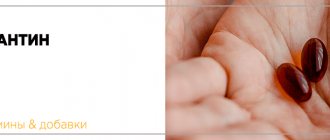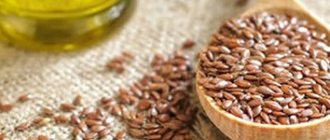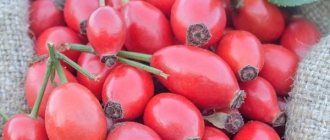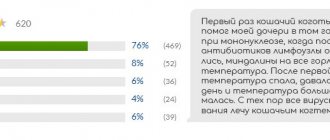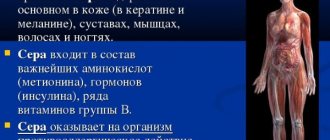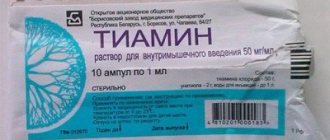| During Soviet times, hematogen was a dessert. And many modern children do not even know what it is or what it consists of. Hematogen was part of the diet of soldiers during World War II. It was prescribed to children who were treated in a hospital, and was also recommended to people of retirement age. |
- What is hematogen
- Hematogen: composition
- Action of hematogen
- The benefits of hematogen
- Harm of hematogen
- Hematogen during pregnancy
- How to use hematogen
- Contraindications for taking hematogen
- How to choose a hematogen
What is hematogen
Now hematogen looks a little different.
In its composition you can find various additives: natural and chemical. Today it is allowed to be sold not only in pharmacies, although previously this was a strict norm. Hematogen has retained its basic properties for decades. It is prescribed and recommended to stimulate hematopoietic processes. You cannot eat it by your own decision unless there are appropriate indications. It is also important to maintain a certain dose. In the instructions you can see and make sure that hematogen is a drug for hematopoietic processes. That is, it cannot be considered a candy or dessert that can be eaten whenever and as much as you want. In the pharmaceutical classification today it belongs to dietary supplements. Hematogen is similar in appearance to chocolate, but its taste and structure are different.
Composition variations and additives
Currently, you can find hematogen with any composition and various additives that attract the attention of buyers. To attract the target audience, many manufacturers use a trick and label the delicacy as adult and children's. It should be noted that the composition of this product for adults and children should not be different. Therefore, this is just a marketing ploy.
A real hematogen should not contain various additives, since:
- Firstly, the medicinal properties of the drug are reduced;
- Secondly, it becomes more caloric (this is important for obese people who are watching their figure);
- Thirdly, it becomes more like an ordinary confectionery product (the specific taste of a real delicacy is lost).
All additives are intended to increase the attractiveness of this product. What additives are used in the manufacture of the product?
Most often, the composition of this dietary supplement (BAA), in addition to the required substances, includes:
- Ascorbic acid (vitamin C);
- Chocolate or cocoa;
- Coconut flakes;
- Nuts;
- Sesame seed;
- Honey.
These additives make dietary supplements more attractive primarily for children. Hematogen can also be additionally enriched with vitamin and mineral complexes.
Hematogen: composition
The basis of any hematogen is cattle blood, purified from microorganisms and defibrated. But often manufacturers use purified hemoglobin rather than blood. In order for the medicine to have a pleasant taste, its composition includes:
- sugar
- molasses
- sesame
- chocolate
- nuts
- honey
- candied fruit
- coconut flakes
- condensed milk
- vanilla, etc.
The word “blood” will not be written in the composition; you will see “food albumin” there. This phrase hides blood protein.
Hematogen contains microelements, macroelements and nutrients that have a positive effect on hematopoietic and other processes in the body. As for the carbohydrate composition of hematogen, sugars can be found in it:
- dextrin
- maltose
- sucrose
- glucose (most often)
As for fats, hematogen also contains them. These are animal fats and vitamins that dissolve in fat. Hematogen also contains iron, which the body needs for iron deficiency anemia. As for vitamins, you will mainly find vitamins A and C in this medicinal supplement. But other options are also possible. Then the vitamin will be indicated on the package. Iron is not the only mineral that hematogen contains. There are sodium, potassium, chlorine and calcium. They are present there in small quantities, therefore they cannot fully cover the body’s daily needs. Everything else in hematogen is auxiliary substances, which for the most part are designed to improve the taste of the product.
What was hematogen made from in the USSR?
In 1891, in Switzerland, scientist Adolf Hommel gave the world an iron-containing drug, which was called “Hommel’s medicine.” Initially, the medicine contained bovine blood and egg yolk. Indeed, such a drug was sold in the form of a medicine, and then the composition changed, they began to add dried blood to the medicine, and they began to make the hematogen in the form of solid plates.
In 1917, hematogen production was launched in the Soviet Union. In 1951, the composition of hematogen looked like this: 5% dry blood, 0.12% ascorbic acid and the remaining percentage was honey, condensed milk, sugar and molasses.
Action of hematogen
It is not for nothing that this drug is prescribed if tests reveal very low hemoglobin. Hematogen is a source of iron. And it compensates for low hemoglobin levels. Iron is absorbed in the intestines and from there enters the blood. There it takes part in the formation of the hemoglobin protein, which is the essence of the hematopoietic process.
Iron increases the amount of ferritin protein, which binds excess iron so that it does not poison the human body. This is how “depots” are created, that is, iron reserves.
ABOUT THE DRUG
Hematogen has a general strengthening and preventive effect on a woman’s body. Thanks to its composition, it helps accelerate the absorption of iron and replenish the body's depot. As a tasty preventive measure against reducing the level of micronutrients in the body, ferrohematogen can be used in cases of insufficient iron intake from food.
With a reduced hemoglobin level, ferrohematogen can be used as a supplement to taking iron supplements and a special diet. When hemoglobin levels are close to normal, hematogen can be used as a means of preventing iron deficiency in addition to the daily diet. Before use, prior consultation and doctor's recommendation is required.
The benefits of hematogen
A doctor can prescribe hematogen to a child, teenager or adult not only when a disease is detected, but also in a transient state (the state before the disease, when warning signs of a particular pathology appear). As already noted, hematogen is used for disturbances in the process of creating blood in the body. It has a fairly high nutritional value.
Conditions and diseases for which hematogen is useful:
- general exhaustion of the body (under the influence of poor ecology, stress, physical or prolonged mental stress)
- Iron-deficiency anemia
- gastrointestinal ulcers, in which bleeding is one of the symptoms
- lack of vitamins
- visual impairment due to lack of vitamin A in the body
- The child's growth is too slow and there is insufficient weight gain
- suffered serious illnesses
Nutritional value and beneficial properties
An iron bar is a high-calorie product - 350 kcal in a 50-gram bar. The lion's share in the structure of the product is carbohydrates - three quarters of the volume due to sweet additives. Six grams come from proteins and three grams from fats. Vitamins, amino acids and nutrients make the product useful for the following states of orgasm:
- Metabolic disorders.
- Blood loss after injuries and surgery.
- Visual impairment.
- Decreased immunity.
- Slowing children's growth and weight loss.
- Hypovitaminosis.
- Physical and psychological stress.
- Decreased concentration and memory.
In sports nutrition, hematogen is valued not only for its protein composition. It contains glycogen. Sports doctors recommend consuming easily digestible carbohydrates immediately after strength training. 25 grams of “pharmacy chocolate” will fill the energy deficit after physical and emotional stress. Protein bars and whey protein shakes continue to be a complete source of protein.
Harm of hematogen
Some people really like hematogen and consume it as a dessert without a doctor’s prescription. But remember that you should not eat this medicine like regular food. The most obvious consequence: excess (excess accumulation) of iron. In such cases, free radicals are produced, which can damage cell walls or even contribute to their destruction.
If the amount of iron in the body is higher than normal, cholesterol begins to actively deposit in the vessels. And this, as we have already written, is a factor in the development of such a disease as atherosclerosis. A large amount of hematogen causes fermentation processes in the intestines. This can cause symptoms such as nausea and even vomiting, dizziness, and loose stools.
Hematogen during pregnancy
Pregnant women have a high need for iron. This is important for the placenta to form normally, the fetus to develop properly, and also for the normal state of the expectant mother’s body. The source of iron should be external, not a ferritin depot. Most iron is lost during childbirth, when a woman bleeds to death. Iron is also “sucked out” by the baby during breastfeeding.
In pregnant women, the volume of freely circulating blood increases by almost 1.5 times; accordingly, more iron is needed than before conception. In the second and third trimester (from the 4th to the 9th month of gestation) you need even more iron than in the first three months. During this period, there is a very high risk of developing iron deficiency anemia. For prevention, you need to ensure that the pregnant woman consumes 27 mg of iron per day. To do this you need to eat hematogen. But it cannot be the only source of the required element. Good nutrition is also important. Meat, fish, liver, chicken eggs, cereals and green vegetables cannot be excluded from a pregnant woman’s diet. Sometimes you don’t want them, but remember that both you and your unborn child need them.
But regarding the use of this dietary supplement, you should definitely consult with your doctor, who will determine the optimal individual dose. Even during pregnancy, you cannot eat hematogen uncontrollably, because an excess amount of it will negatively affect the baby’s body. Excessive intake of hematogen causes blood thickening, which can lead to thrombophlebitis.
Right choice
Buy iron-containing tiles at pharmacies. In grocery stores, a similar product is sold under the name “Hematogenka”. There are no traces of bovine blood extract in the composition, so this is a “useless” sweet bar.
Pay attention to the prescription composition of hematogen. The main component is food grade black albumin. The additional letter “C” indicates that the drug is enriched with ascorbic acid. The acid increases the absorption of iron from the sweet bar. The “plus sign” next to the name indicates divalent (heme) iron. Such labeling is unnecessary: non-heme iron is found in plant products, divalent iron is found in products of animal origin.
Hematogen with additives appeared on sale:
- fortified;
- walnut;
- coconut;
- sunflower;
- sports.
You should not buy hematogen with herbal additives, which also contain sweeteners, preservatives, stabilizers and enhancers. The value of “pharmacy chocolate” is in iron preparations obtained from animal blood, and not in the variety of tastes.
How to use hematogen
Hematogen today can be purchased as bars, tiles or chewing strips. The dosage can be different: from 20 to 50 grams. Children from 3 to 6 years old can take 5 grams 3 times a day. Children from 6 to 12 years old are prescribed two doses of 10 grams. Children from 12 to 18 years old can take no more than 10 grams of hematogen 3 times a day.
Adults can take 5-15 grams 2-3 times a day. Pregnant women are given a maximum of 50 grams per day (various numbers of doses). People of any age can take Hematogen for 14 to 21 days (course). If you are pregnant, ask your doctor about the course of taking this dietary supplement; there may be individual differences. Hematogen must be taken between meals to ensure complete absorption of nutrients.
Hematogen can be washed down with clean water. But you don’t need to drink it with milk or other dairy products, as this will worsen the absorption process. You cannot take vitamins in courses together with hematogen. If you need to take other medications in parallel with the course of Hematogen, consult your doctor. This is a serious question, although you may mistakenly think otherwise.
Indications for use
Hematogen is recommended to be used regularly in the following cases:
- anemia associated with hemoglobin deficiency (there are different types of the disease, the specific diagnosis must be clarified in advance during an examination with a doctor);
- unbalanced diet;
- slow weight gain after weight loss, for example, due to illness or surgery;
- ulcerative pathology, accompanied by bleeding (not always noticeable);
- vision problems;
- bone and/or soft tissue injuries;
- wounds that do not heal over a long period.
Contraindications for taking hematogen
The main conditions and diseases in which it is better to avoid using hematogen:
- obesity (BMI over 30)
- diabetes
- age less than 3 years
- thrombophlebitis
- varicose veins
- metabolic disorders
- anemia (not iron deficiency)
- individual sensitivity to hematogen components, due to which there may be allergic reactions, up to very dangerous Quincke's edema
Hematogen, like all drugs, has its side effects. They mainly concern the gastrointestinal tract. This dietary supplement can irritate the mucous membrane of the stomach or intestines and activate the vagus nerve. Therefore, an unpleasant feeling in the abdomen, nausea and vomiting may appear.
Latest research on the properties of hematogen
The modern world today is actively trying to find out the true effect of hematogen on the human body. Recent studies on it show that there are also negative aspects to the regular use of the drug.
It must be taken into account that hematogen has a lot of harmful and dangerous additives - sugar, condensed milk, honey, which can significantly increase the overall level of glucose in the blood (which is especially dangerous in diabetes) and cause severe allergic reactions. In addition, it is only suitable for the prevention of anemia, but it is not capable of curing it.
Does it increase hemoglobin or not?
It is believed that albumin, which is part of the hematogen slab, contains iron and it is natural that it will increase hemoglobin. Iron is the only macronutrient that can bind to hemoglobin. And depending on the amount of iron entering the blood, the hemoglobin level will change.
But the catch is that no studies have been conducted on changes in hemoglobin levels after consuming Haematogenum. It is not entirely clear how high the degree of purification of albumin is and what kind of iron is included in its composition.
Divalent iron salts are useful for the human body.
At the same time, the ratio of its amount found in one tile to the amount that is absorbed is significantly different. For better absorption, proper nutrition is necessary. For example, it is important to consume red fruits and vegetables and dark juices, which improve the absorption of iron in the small intestine.
All these nuances have not been fully studied. Therefore, there is no precise evidence that hematogen increases hemoglobin levels. But still, it is registered in many countries as a means for the prevention of iron deficiency conditions.
Consumption standards
Since hematogen is a sweet and tasty dietary supplement, its use is common among children. Because of this, parents often wonder how much they can eat. In fact, it is difficult to judge, since the norm is purely individual for everyone and depends on weight, tolerance, and needs.
We should not forget about sucrose, which is part of the dietary supplement, that is, it is not recommended to use the product for people with impaired glucose tolerance or hereditary enzymopathies. On average, it is believed that the daily intake for adults is 50 g, for children – 30 g.
Compatibility with other drugs
Hematogen should not be taken together with other vitamins, as dyspeptic disorders may occur, for example, nausea, vomiting, abdominal pain, increased intestinal motility, etc. It is not recommended to take an iron-containing dietary supplement with iron supplements, such as Maltofer, Tardiferon. This may cause high serum iron concentrations, which may result in side effects. One of them may be staining of teeth black, a icteric tint of the skin and mucous membranes, and an enlarged liver.
Another incompatible ingredient for this product is calcium (and products based on it), since it counteracts iron. That is, at high concentrations of calcium in the blood, the digestibility of ferrum is reduced to a minimum.
It is not recommended to combine antibiotics with dietary supplements, especially cephalosporins and fluoroquinolones, as the motility of the digestive system is impaired. The same applies to diuretics, antihypertensives, and nonsteroidal anti-inflammatory drugs.
See also:
Maltodextrin - what is it, benefits and harms, glycemic index
